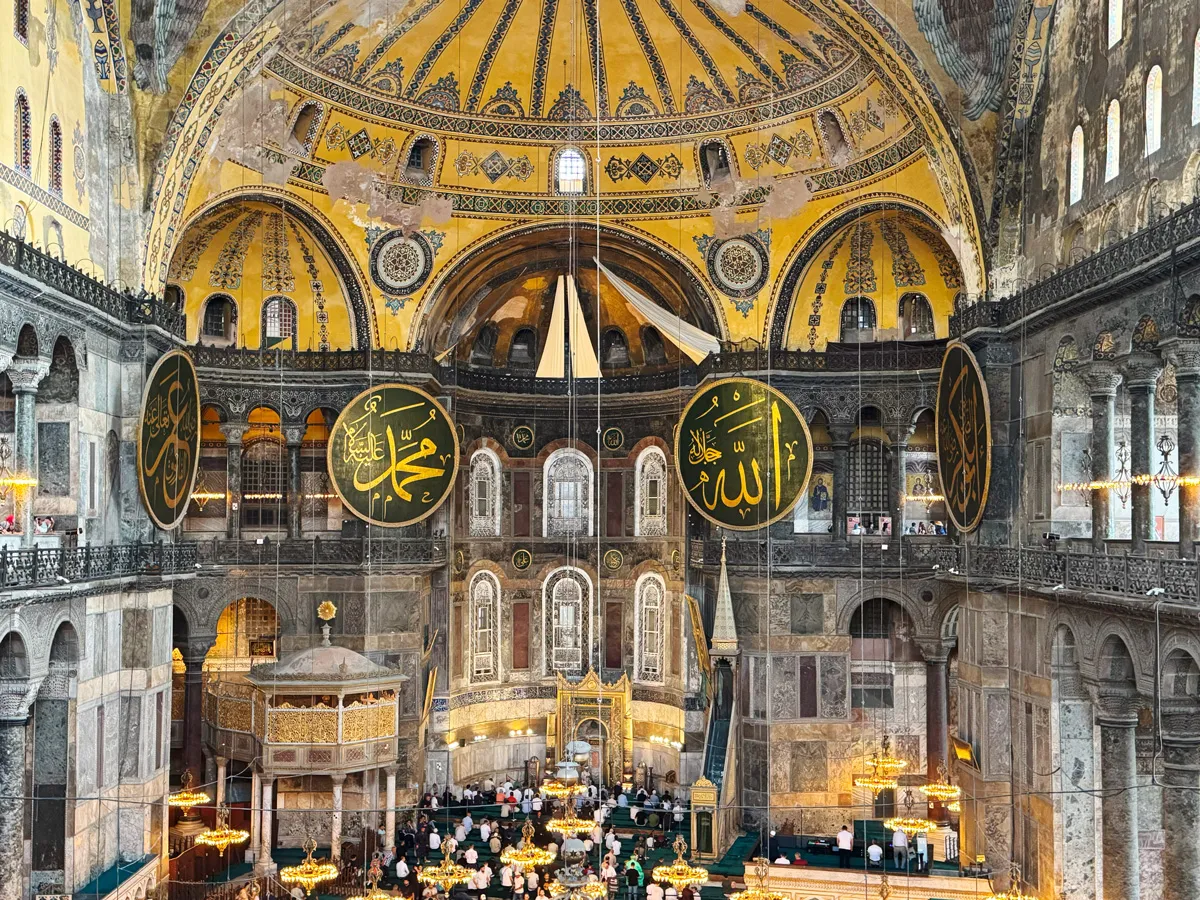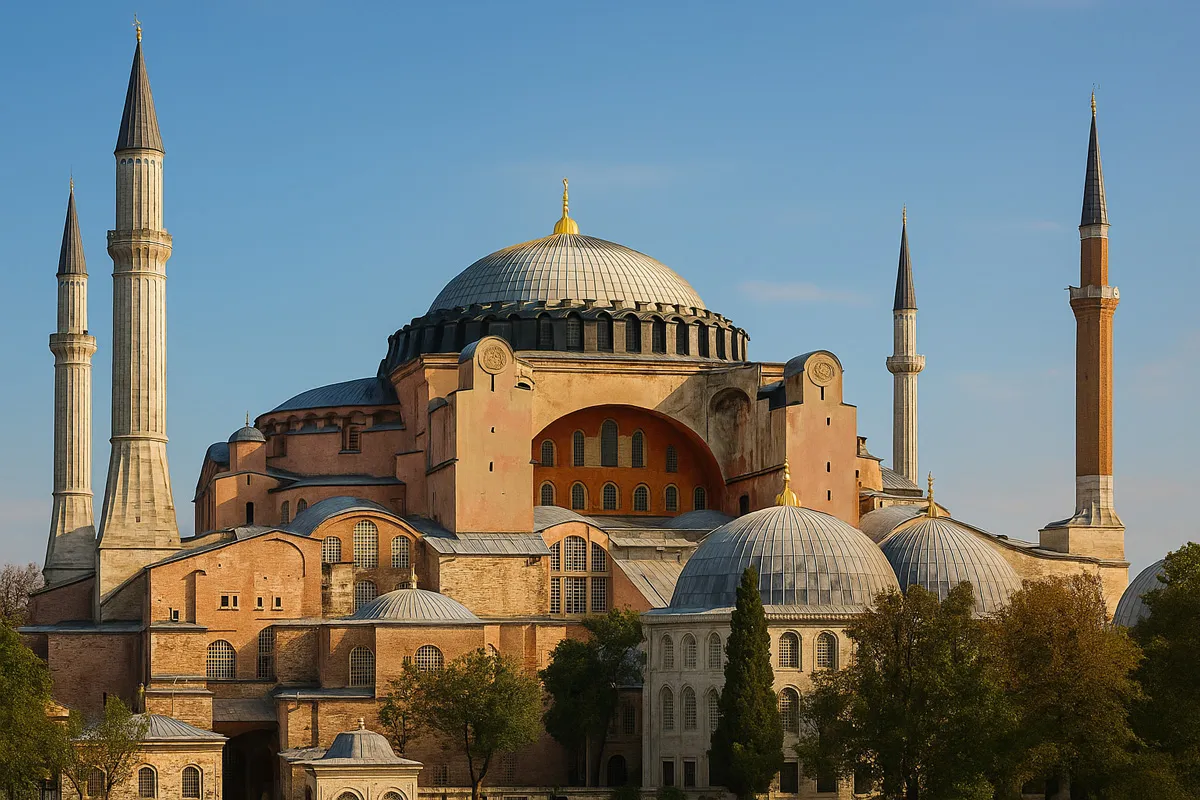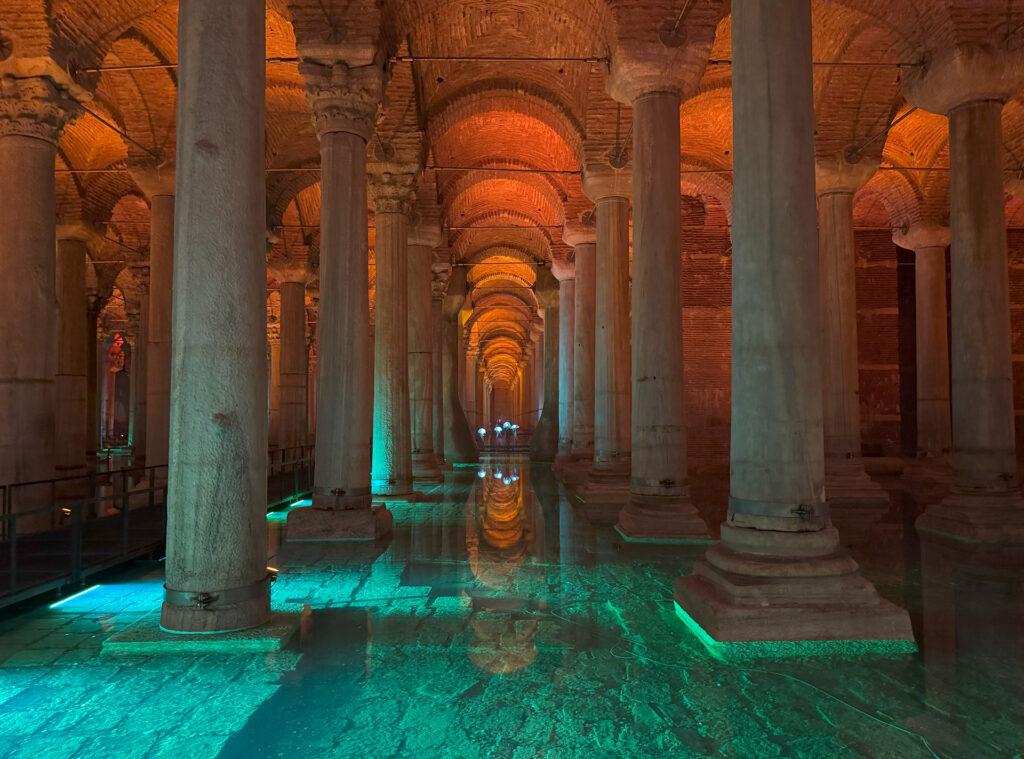
Istanbul’s Hidden Treasure|A Journey into the Underground Palace
If there is one place in Istanbul you absolutely cannot miss, it’s the Basilica Cistern (Yerebatan Sarnıcı).
Stepping inside feels like walking onto the set of a fantasy movie. A vast forest of marble columns stretches into the darkness, while shimmering reflections dance across the water’s surface, creating an atmosphere that is both mysterious and enchanting.
📸 Perfect for Instagram! If you’re looking for unforgettable photos and videos, this underground world is the ultimate stage.
Purpose (Why Was It Built?)
- Builder: Constructed in the 6th century under Emperor Justinian I of the Eastern Roman Empire
- Function: A massive underground reservoir designed to supply drinking water to Istanbul’s Great Palace and surrounding buildings
- By storing water beneath the city, it ensured a stable water supply even during wars or droughts—an essential piece of ancient urban infrastructure.
Size
- Length: Approximately 140 meters
- Width: Approximately 70 meters
- Total area: About 9,800 square meters (roughly 1.5 times the size of a soccer field)
- Capacity: Estimated to hold up to 80,000 tons of water
Number of Columns
- Total: 336 columns
- Height: Each stands about 9 meters tall
- Design: A fascinating mix of column capitals—Corinthian, Doric, and Composite styles. Many were spolia, reused materials taken from earlier temples and monuments of the Roman and Greek world.
History and Cultural Background
|
Period / Date |
Event / Details |
|
6th century |
Built under Emperor Justinian I of the Eastern Roman Empire |
|
Purpose |
Supplied water to the Great Palace and surrounding buildings |
|
Name |
From Latin Cisterna Basilica (“Basilica Cistern”) |
|
1453 |
After the Ottoman conquest, it supplied water to Topkapı Palace |
|
16th century |
Studied in detail by naturalist Petrus Gyllius (recorded 336 columns and size) |
|
18th–19th centuries |
Restored during the reigns of Sultan Ahmed III and Abdülhamid II |
|
1985–1987 |
Major restoration, opened as a museum |
|
2019–2022 |
Largest restoration in its history by İBB Heritage Department |
-872x1024.jpg)
Highlights of Architecture and Interior
The Basilica Cistern is home to 11 must-see spots, each filled with history, legend, and unforgettable charm:
1. Entrance Hall
As you descend the long staircase, you are suddenly confronted with a breathtaking sight—a vast hall filled with towering marble columns. The cool, damp air and the faint shimmer of water instantly set the mood. It feels like stepping into a palace buried beneath the earth, a world far removed from the bustling city above. From the very first moment, visitors are transported into an extraordinary, almost dreamlike atmosphere.
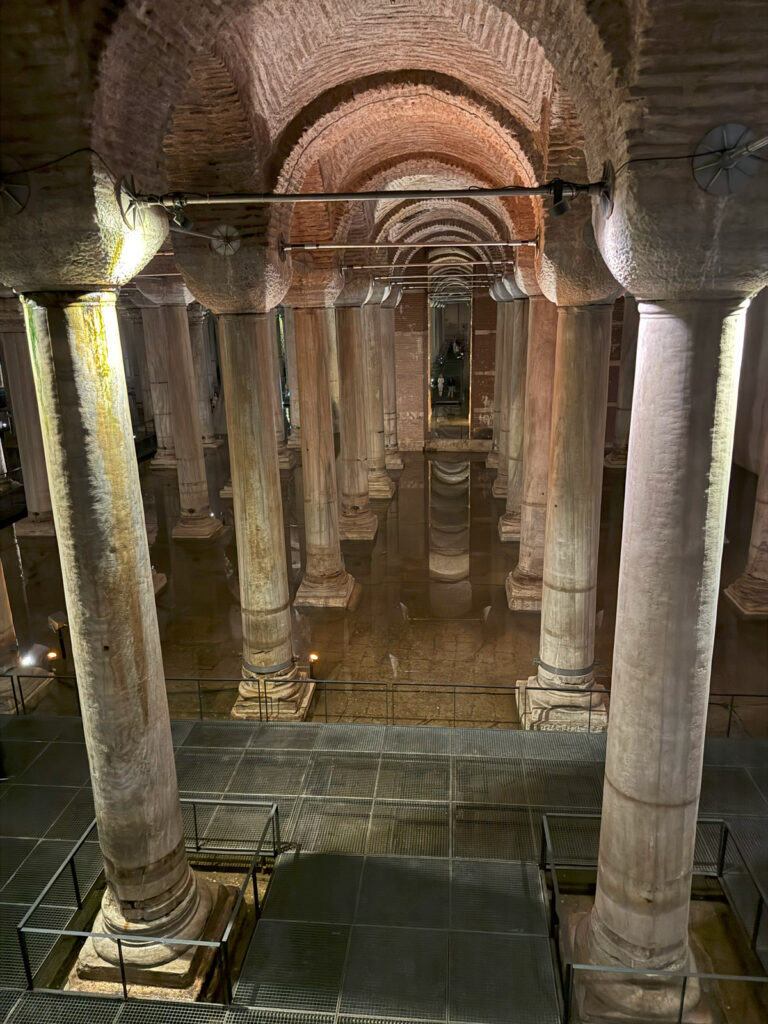
2.The Central Column Corridor
Stretching an impressive 140 meters in length, the central passage is lined with 336 marble columns, each nearly 9 meters high. The sight is nothing short of awe-inspiring. Many of these columns were repurposed from older Roman structures, which explains the fascinating variety of capitals—Corinthian, Doric, and even Composite styles. Look closely and you’ll notice the details that tell the story of ancient recycling in architecture. This is where the grandeur of Rome meets the practicality of Byzantine engineering.
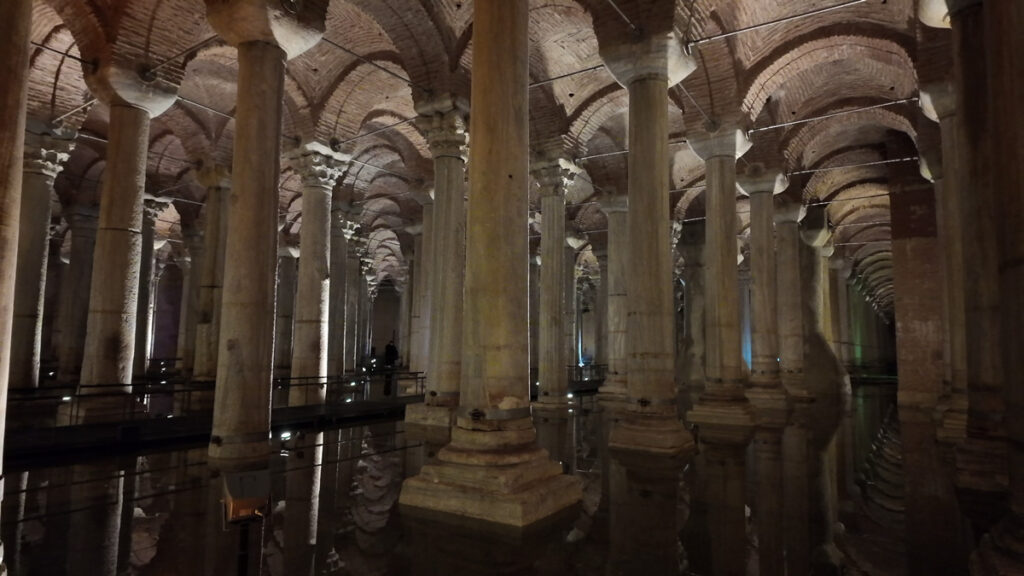
3. The Imperial Walkway
The central main aisle is often referred to as the Imperial Walkway, believed to have once been used by Emperor Justinian and high-ranking officials. Today, soft lighting illuminates the stone floor, which appears to float above the reflective waters. Walking along this path feels almost ceremonial, as if you have become part of Byzantine history itself. For many, it’s the most majestic stretch of the cistern.

4.The Weeping Column
Among the forest of columns, one stands out—the famous Weeping Column. Its surface is carved with tear-shaped patterns, said to commemorate the countless workers and slaves who lost their lives during the construction of the cistern. The symbolism is powerful, and many visitors instinctively pause here in silence, some even reaching out to touch the stone in quiet reflection. It’s a moment where history’s shadows feel very close.

5.Side Aisle Exhibition Area
Recent restorations have added an exhibition space along the side aisles. Here, visitors can explore displays that explain the cistern’s history, engineering, and the monumental restoration efforts that have preserved it. Models of ancient water systems and photographs of the craftsmen involved in modern restoration projects reveal how this underground marvel has been sustained through the centuries. It’s not only visually stunning—it’s also a living classroom in urban water management across empires.
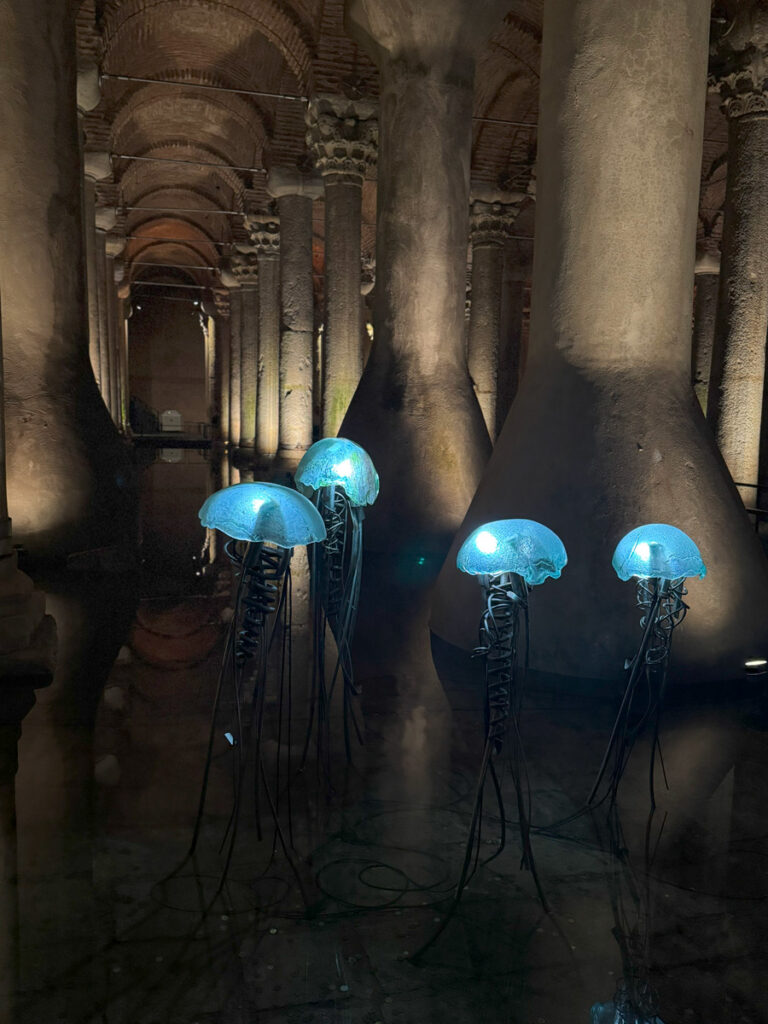

6.Waterways and Reflection Points
One of the cistern’s magical features is the water that always covers its floor. The still surface acts like a mirror, reflecting the forest of columns to create an almost otherworldly scene. At quieter times of the day, the reflections become even clearer, perfect for the famous “upside-down architecture” photographs that fill Instagram feeds. Whether you are a professional photographer or just using your phone, this is one of the most rewarding places to capture the mystery of Istanbul.

7.Unique Column Capitals
A closer look at the capitals—the tops of the columns—reveals a striking diversity. Some are Corinthian, adorned with elegant acanthus leaves; others are Doric, plain and robust; while still others are Composite, blending different styles. This eclectic mix is the result of spolia—the ancient practice of reusing materials from older monuments. For architecture lovers, the cistern is a treasure trove, offering the rare chance to admire so many styles gathered in a single underground hall.

8.Northern Arch Structures
At the northern end of the cistern, massive arches and supporting walls showcase the brilliance of Byzantine engineering. These structures, designed to bear immense weight, are remarkably well-preserved. Standing beneath them, it is almost unbelievable to think that they have been holding steady for more than 1,500 years. Their endurance is a testament not only to the skill of the builders but also to the ingenuity of an empire that knew how to build for eternity.
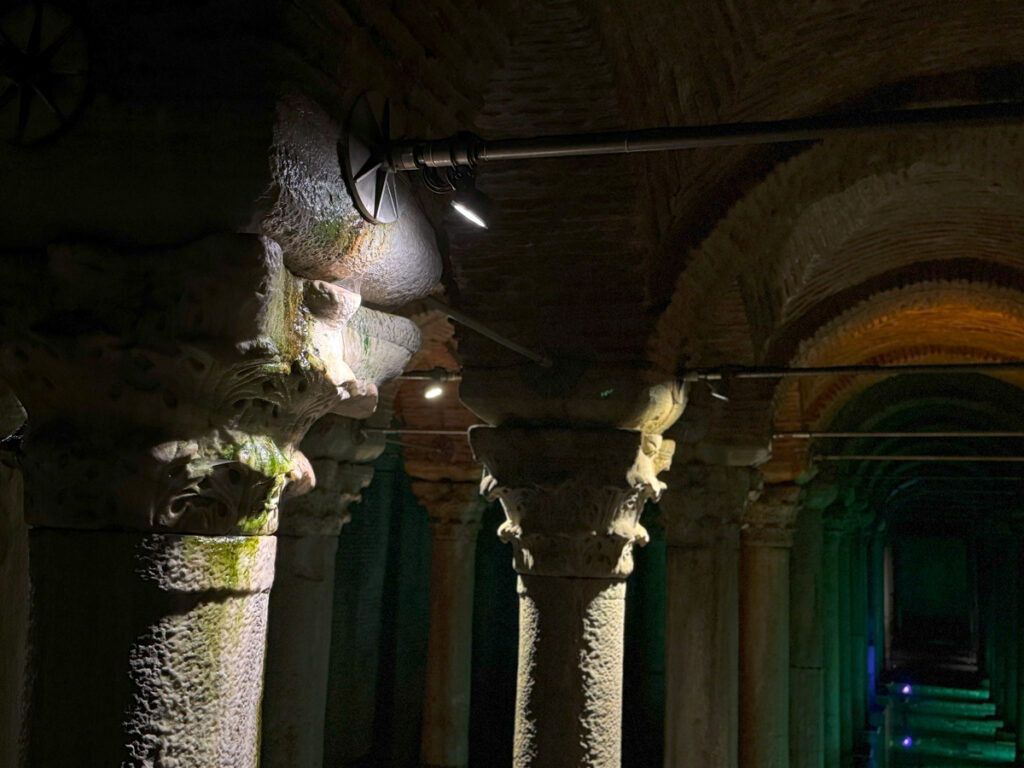
9.The Upside-Down Medusa Head
The greatest highlight of the Basilica Cistern is without a doubt the Upside-Down Medusa Head.
In Greek mythology, Medusa was the terrifying creature whose gaze could turn anyone into stone. So why is such a fearsome image placed here, as the base of a column in an underground water reservoir?
Several theories exist:
- Magical protection – Placing her face upside down may have been a ritual act to neutralize her deadly gaze.
- Practical purpose – The stone may simply have been reused in that position to adjust the column’s height.
- Symbolic meaning – Positioning a pagan idol upside down could represent the triumph of Christianity over ancient religions.
Whichever explanation you choose to believe, the Upside-Down Medusa continues to fascinate visitors. Even after 1,500 years, her silent, inverted gaze sends a strange shiver down the spine of those who pause to look—and almost everyone does.

10.The Sideways Medusa Head
Just nearby lies another treasure: the Sideways Medusa Head. Together with the upside-down version, these two sculptures appear more like works of art than mere building blocks.
The sideways face is especially intriguing because its expression seems to change with the light. Under the soft illumination of the day, it appears calm, almost asleep. But at night, shadows play across the features, giving the unsettling impression that the eyes might suddenly open.
Up close, the artistry is undeniable. The flowing hair and finely carved eyes showcase the remarkable skill of ancient Greek sculptors—details that still radiate power despite centuries underwater.
Many visitors interpret the two Medusa heads as symbols of “light and shadow” or even “life and death.” For this reason, the Medusa corner of the cistern is more than just a photo spot—it is a place where myth, history, and philosophy meet beneath the streets of Istanbul.
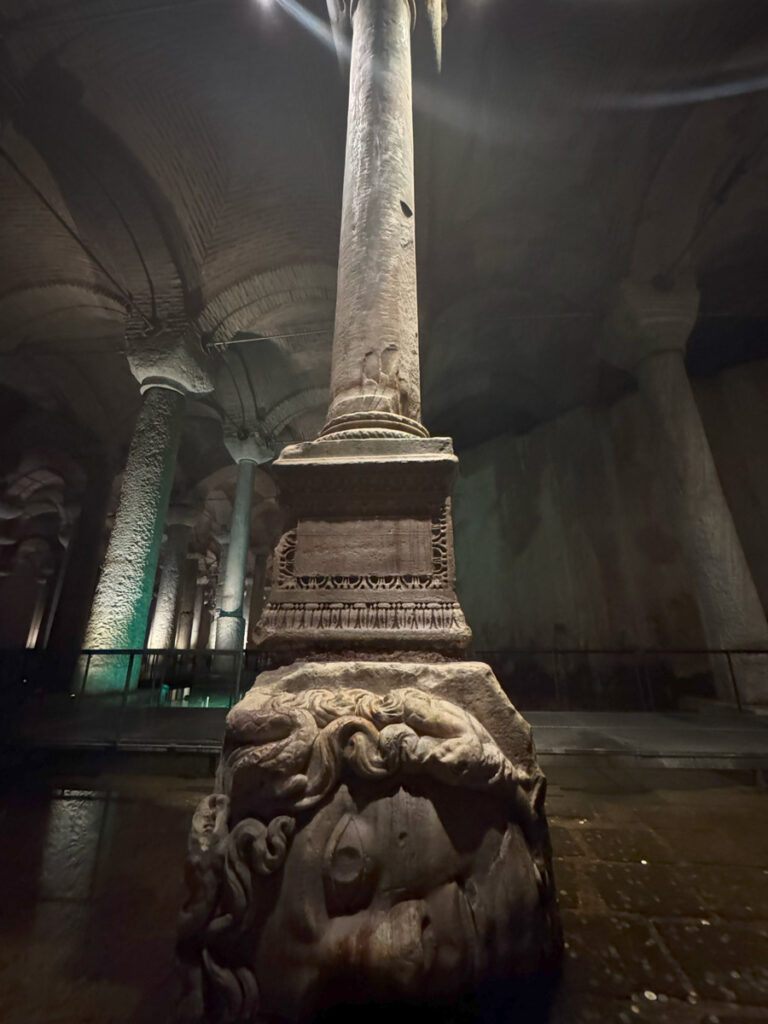
How to Get There
- Tram T1: 3-minute walk from Sultanahmet Station
- Bus: Stop at Sultanahmet
- On Foot: Less than 5 minutes from Hagia Sophia and the Blue Mosque
- Taxi: Easy access, right in the heart of the Old City
Traveler’s Note: Transportation schedules and access routes may change. Always confirm directions locally or check official city transit updates before your visit.
Frequently Asked Questions
- What is the entrance fee?
-
300 TL (as of 2025
Tip: Prices may change. Please verify on the official Basilica Cistern website or at the entrance before your visit. - What are the opening hours?
-
Daily, 09:00–19:00 (subject to change)
- Is there a dress code?
-
No, it’s not a mosque. Comfortable shoes are highly recommended due to damp flooring.
- Can I take photos?
-
Yes! Flash is discouraged to preserve the atmosphere.
- Is it accessible for kids and seniors?
-
Yes, recent renovations have improved accessibility. While there are still stairs, handrails and resting areas are provided.
Photography & Visitor Tips
- Best lighting: afternoon reflections on the water
- Iconic shot: Looking up at the Medusa heads from below
- Rainy days: The air feels especially fresh and mystical
My Experience: Visiting early in the morning, the only sound was water dripping—a moment so quiet, it felt like time itself had stopped.
Nearby Recommendations
Hotels
- Luxury: Four Seasons Hotel Istanbul at Sultanahmet
- Mid-range: Hotel Arcadia Blue
- Budget: Cheers Hostel
Restaurants
- Sultanahmet Köftecisi – Authentic Turkish meatballs
- Seven Hills Restaurant – Rooftop terrace with Bosphorus views
Cafés
- Hafiz Mustafa – Famous for baklava and Turkish tea
A Conversation with Barış & Noah
 Barış
Barış“Noah, this place feels like another world—almost unreal.”



“Woof! (Like a movie set!)”



“And it actually was. Remember From Russia with Love (1963) and Inferno (2016)?
Both filmed scenes right here.”



“Woof woof! (So we’re walking where James Bond and Hollywood stars walked!)”



“Exactly. That’s why if you come to Istanbul, this is one place you simply can’t miss.”



“Woof! (It wouldn’t be a real trip without it!)”
Conclusion
The Basilica Cistern is not just another tourist attraction—it is a 1,500-year-old underground masterpiece, a living memory of water, civilization, and human resilience from Byzantium to the Ottomans and into modern-day Istanbul.
Here you will encounter:
- A mystical silence that shields you from the city’s noise
- Towering columns reflected in shimmering pools of water
- Legendary Medusa heads steeped in myth and symbolism
- Photography moments that will remain with you long after your trip
Whether you are a history lover seeking knowledge, a casual traveler searching for wonder, or a photographer chasing the perfect shot—the Basilica Cistern is destined to become the highlight of your Istanbul journey.
Before You Go: Always check the official website for the latest information on tickets and opening times to ensure a smooth visit.
Coming up next: Discover Istanbul’s other timeless icons—the Blue Mosque and Hagia Sophia—to complete your unforgettable Old City adventure.
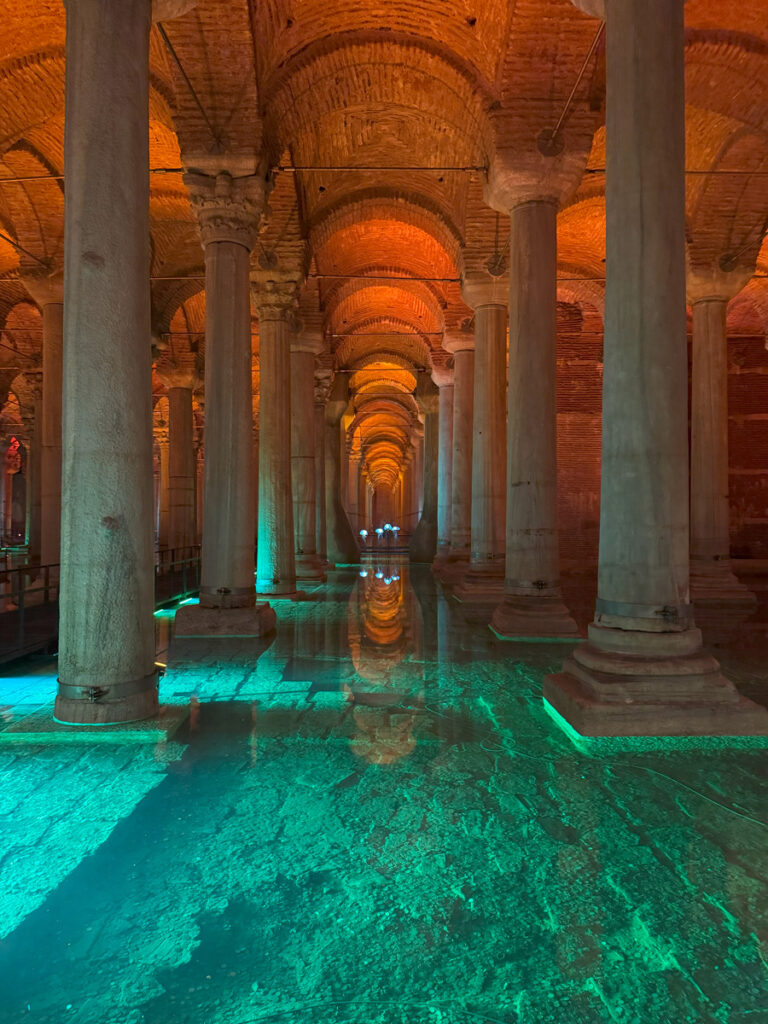

.jpg)
.jpg)
